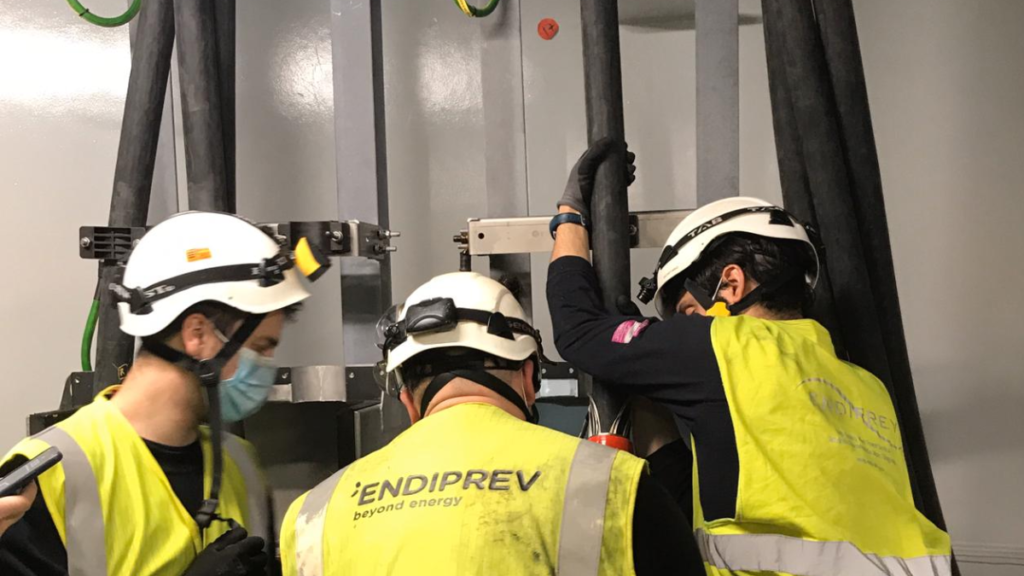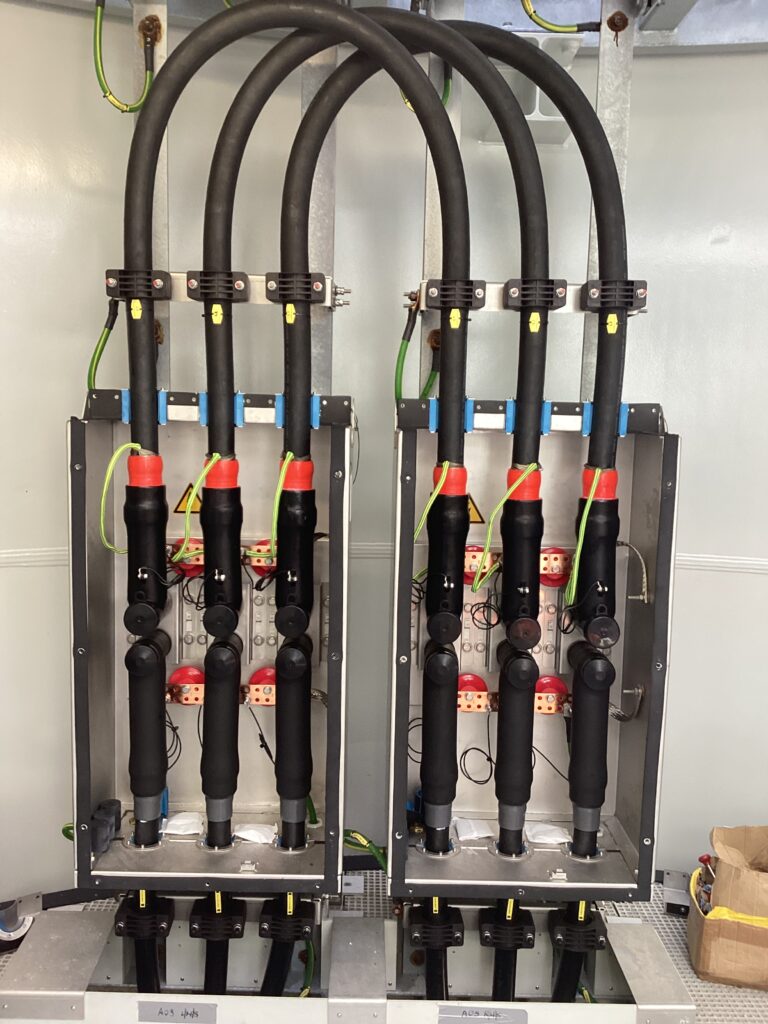News
The Importance of Proper HV Cable Management
As wind energy continues to play a crucial role in the global transition toward sustainable energy, the reliability and efficiency of wind turbines have become paramount. Here is how.

One of the key aspects ensuring the optimal performance of wind turbines is the proper management of high-voltage (HV) cables. These cables serve as the backbone of power transmission within the turbine and beyond, making their correct termination, jointing, testing, and routing essential for safe and efficient operation.
As our more than a decade of experience has shown us, poor cable management can lead to increased failure rates, operational downtimes, and costly maintenance—especially now that wind turbines are more digital. As they gather more information from sensors, they require even more connectors to communicate well.
Our work in Offshore Wind Cable Management
While cable management plays a key role in various industries, it becomes even more crucial in offshore wind projects. Nearly three years ago, Endiprev successfully completed High Voltage connections and cable management on high-grade steel transition pieces aboard the Saint-Nazaire’s Wind Installation Vessel (WIV). Our customers highly recognized its performance because our technicians knew exactly what to do. At the WIV, with a team of 24 specialists, we worked on:
- High Voltage Electrical Completion between the transition piece and the T1.
- Low voltage and signals interface between the transition piece and the T1.
This project serves as a prime example of the importance of precise and efficient cable management.
Why is cable management crucial for wind power projects?
Despite being a fundamental task, many inexperienced companies may underestimate the importance of proper cable management. This oversight can lead to neglected details that significantly impact both the project at hand and future wind turbine maintenance activities. A well-executed job makes a difference, ensuring efficiency and reliability.
Effective HV cable management encompasses termination, jointing, testing, and routing—each playing a critical role in ensuring the safety and longevity of wind power systems.

HV Cable Termination
Proper HV cable termination is vital to ensure a secure and reliable electrical connection. A well-executed termination prevents insulation failures, electrical discharges, and overheating, which can lead to system failures. The process involves stripping the cable, installing stress control components, and applying insulation and sealing materials to prevent moisture ingress. Using high-quality materials and adhering to industry standards are crucial for minimizing risks and enhancing the longevity of the cable system.
HV Cable Joints
HV cable joints are necessary when connecting cable sections or repairing damaged cables. The integrity of these joints is crucial in maintaining the electrical and mechanical properties of the cable system. Various jointing techniques, such as heat shrink, cold shrink, and resin-filled joints, are used depending on the application and environmental conditions. Properly executed joints ensure minimal electrical resistance, mechanical strength, and protection against environmental factors such as moisture and temperature variations.
HV Cable Testing
To guarantee the reliability and safety of HV cables in wind turbines, rigorous testing is required. Common testing methods include:
- VLF test
- Partial discharge testing
- High voltage withstand testing
- Insulation resistance testing
These tests help identify defects, degradation, or weak points in the cable system before they lead to critical failures. Regular testing and condition monitoring enhance predictive maintenance strategies, reducing problems and improving the overall performance of wind farms.
HV Cable Routing
Effective HV cable routing plays a significant role in optimizing space utilization and reducing mechanical stress on the cables. Cables must be routed in a manner that minimizes exposure to vibrations, sharp bends, and excessive tension, which can lead to premature failure. Proper support structures, such as cable trays and conduits, should be used to secure the cables and prevent damage. Additionally, consideration must be given to factors like electromagnetic interference and accessibility for maintenance when designing the routing layout.
So, a well-structured approach is fundamental to the efficiency and longevity. By implementing industry best practices and adhering to rigorous standards, we help ensure that everything runs smoothly, as exemplified by our work in Saint-Nazaire, showcasing the importance of high-quality materials and skilled workmanship in a real-world scenario. It’s why we have in our teams the best professionals with several years of experience as well as a strong work ethic to make sure that they complete every task successfully.